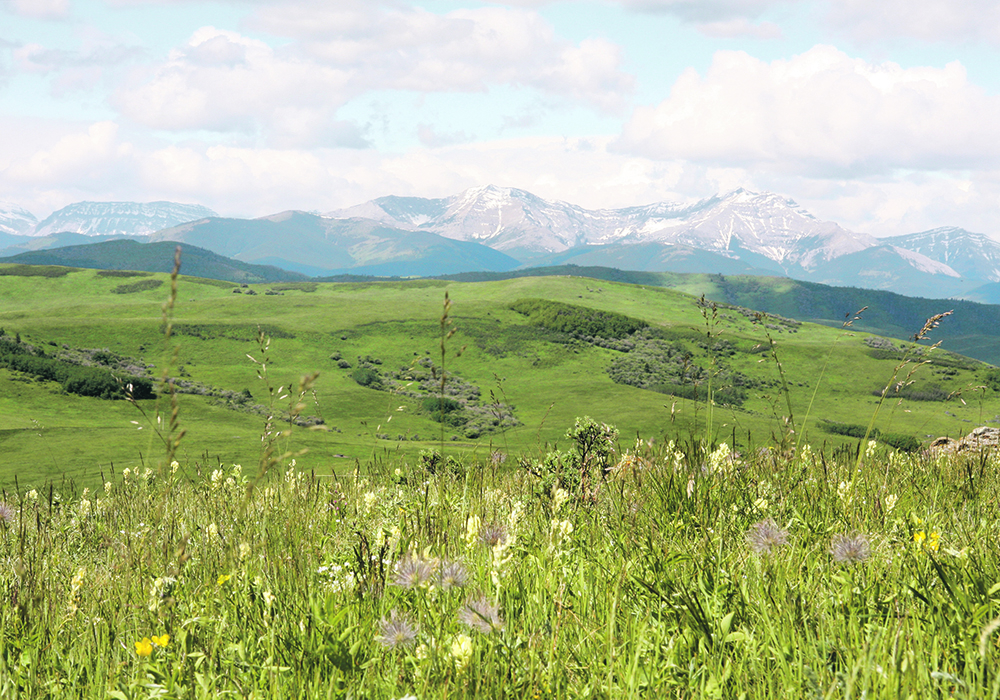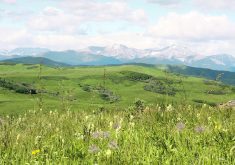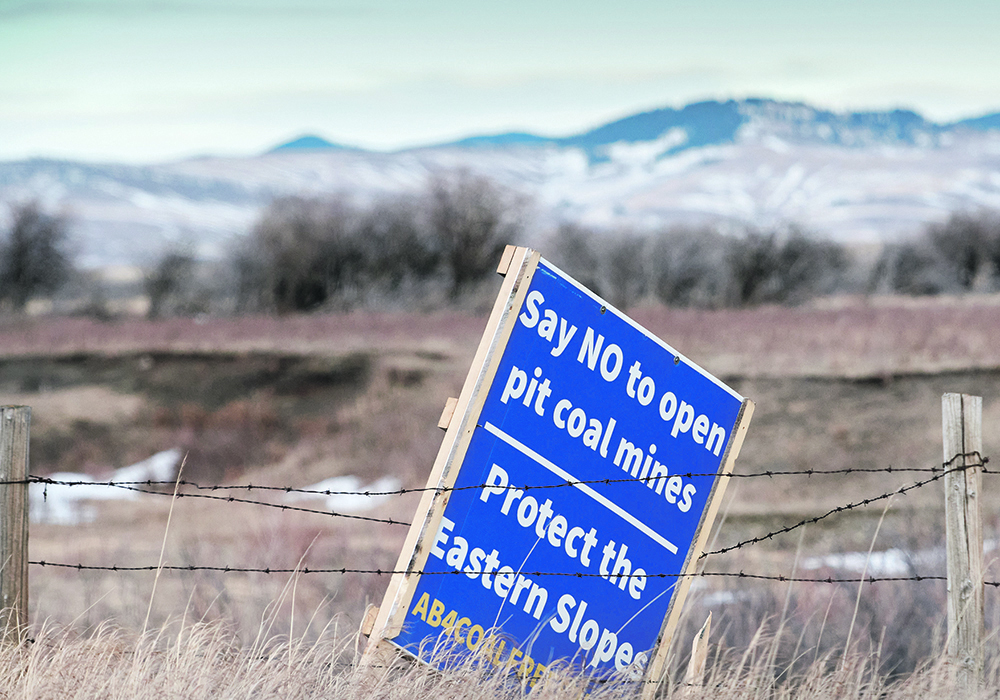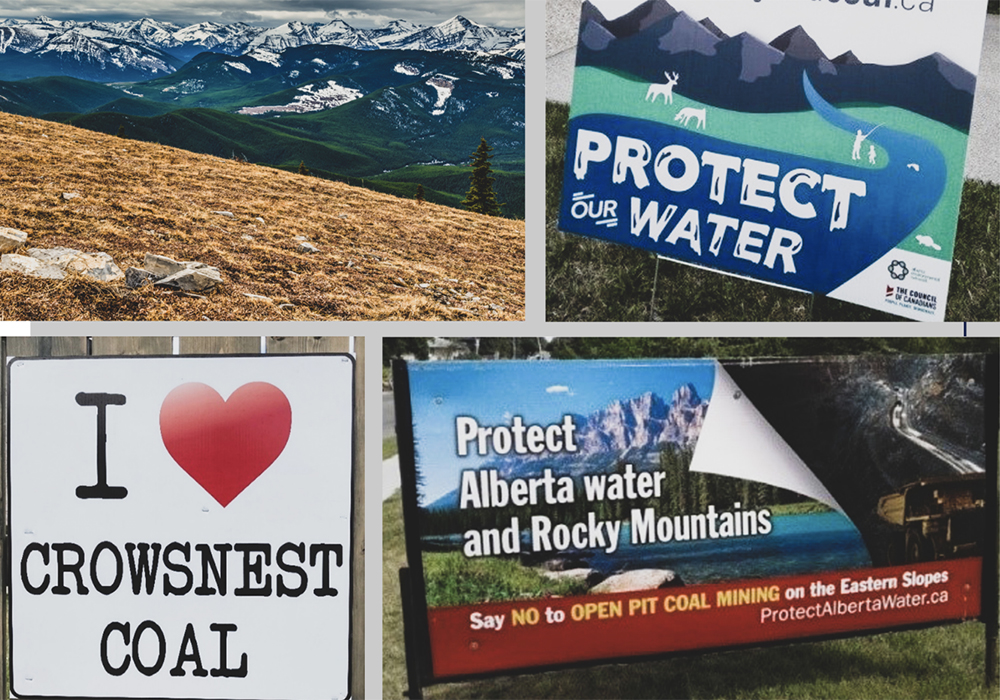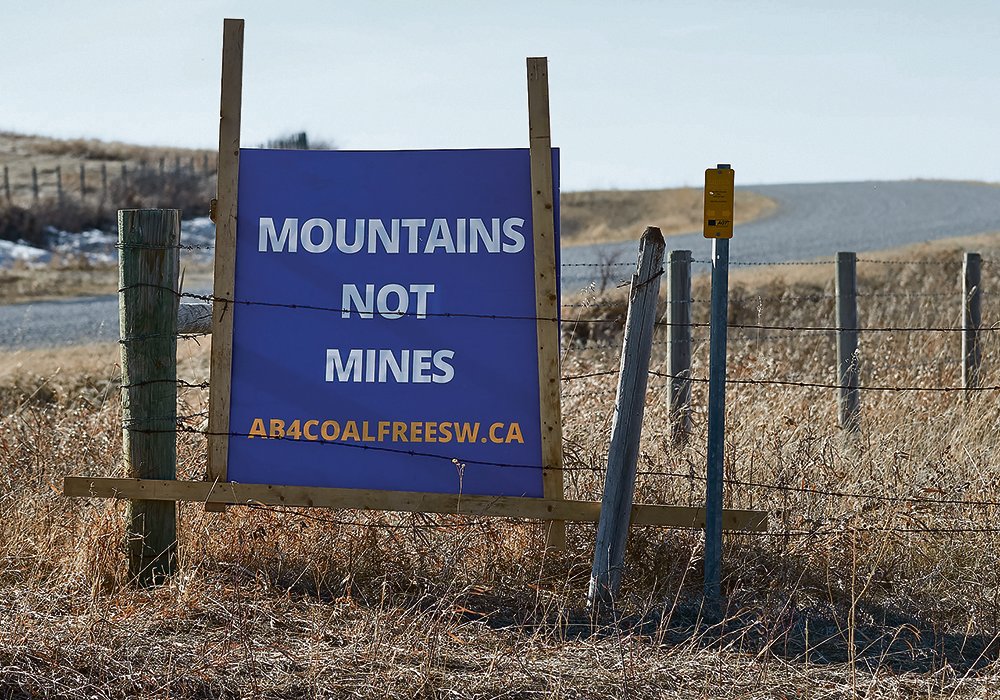There is concern in Alberta’s agricultural community that province’s new premier may open up development in the area
A rancher fears the Alberta government under Premier Danielle Smith will focus on resource development such as forestry and open-pit coal mining on the Eastern Slopes to the detriment of watersheds relied on by farmers.
“I am concerned about it, and I’m anxious to see what their thoughts and their plans are,” said John Smith of the Plateau Cattle Co. west of Nanton, Alta.
The Eastern Slopes of Alberta’s Rocky Mountains contain most of the sources of the Saskatchewan River system, which supplies water to producers and communities across much of the Prairies.
Read Also

New Alberta funding for program hopes to further unlock agritourism industry in province
Alberta Farm Fresh Producers Association is launching a new initiative thanks to $300,000 of provincial funding to bolster Alberta’s smaller scale family farms and agritourism sector.
Danielle Smith replaced Jason Kenney as premier after winning a leadership race Oct. 6 for the governing United Conservative Party. When she was still a candidate, she told people at the Meadowbank Community Hall northwest of Cayley, Alta., she didn’t see anything wrong with coal mining in the Eastern Slopes because it was a vital source of jobs for communities such as Blairmore, said Renie Blades of the Rocking P Ranch.
As someone who was at the hall, Blades said she tried to inform Smith about scientific studies commissioned by the Livingstone Landowners Group and the Pekisko Group of ranchers detailing the negative impact such mining will have on their livelihoods.
However, Smith “had her head pretty much bowed on revisiting (coal) … and so we just debated back and forth like that for probably almost half an hour, I guess,” said Blades.
Rebecca Polak, director of daily communications and press secretary for the premier’s office, did not return an email Nov. 23 requesting comment. During a televised speech Nov. 22 to Albertans, Smith said she had discussed hundreds of topics and sometimes had taken controversial positions in her previous career in media and hosting talk shows.
“I know that I am far from perfect, and I make mistakes… I must be humble, listen and continue to learn from you. I must also be strong, focused and determined to do what I believe to be in the best interest of Albertans, no matter how hard that is.”
John Smith said there needs to be more recognition by the provincial government about what agriculture and the Eastern Slopes’ watersheds contribute to the economy.
“And I guess my biggest comment is it seems like we’re getting fairly ideologically down the road of development — you know, money and industry all the time over everything — so I think we need somebody protecting our special places and our watersheds.”
Danielle Smith has divided the former Ministry of Environment and Parks into two new ministries: Forestry, Parks and Tourism headed by Todd Loewen, and Environment and Protected Areas led by Sonya Savage.
Despite the name of Savage’s ministry, more than 90 percent of the province’s protected areas have been placed under Forestry, Parks and Tourism, said Chris Smith of the Canadian Parks and Wilderness Society (CPAWS) Northern Alberta during an earlier interview. Danielle Smith has stated forestry is a major economic driver and a way to open up parks through things such as forestry backroads.
Intact forests are particularly important in the Eastern Slopes because they help protect its watersheds, said Katie Morrison, executive director of CPAWS Southern Alberta. They ensure streams stay clear by reducing erosion, as well as slowing the release of rainfall or snow so that water is available throughout the year, she said.
Morrison said logging in the Eastern Slopes has typically consisted of what she described as mass clear cutting, causing water to come off all at once in the spring. It also makes it dirtier because precipitation is directly hitting soils, she said.
Producers know better than anyone that water needs to be available later in the summer when it gets hotter and drier and there is more of a risk of drought, said Morrison.
“Intact forests are really important for maintaining our quality and natural timing of water release across the Prairies.”
A mandate letter Nov. 9 by Danielle Smith to Loewen said she expected him to “shorten timelines for approval of permits and licences in all areas of the ministry.” She also asked him to “develop a plan with industry to use active forestry and grasslands management techniques to maintain the health and biodiversity of our provincial lease lands and provide nature-based solutions for carbon sequestration.”
Other priorities included developing a “clear and environmentally responsible policy framework for developing more campgrounds, recreation and tourism opportunities on provincial lands.”
A poll commissioned by CPAWS found that 77 percent of Albertans support the protection of wildlife habitat by setting aside more land to prevent further decline of wildlife populations. Seventy-six percent want more land to be left as wilderness with minimal human activities, with 73 percent in favour of more land for provincial parks focusing on leisure and recreation.
The division of Environment and Parks into the two new ministries is contrary to what the poll indicates Albertans want, said Morrison. The mandate letters for both Loewen and Savage “don’t mention protected areas, they don’t mention wildlife species at risk, even really conservation or the environment,” she said.
“The Ministry of Environment and Protected Areas is really focused on looking at the energy sector and reclamation, and defending the energy sector on the world stage… similarly, the mandate letter for Forestry, Parks and Tourism is really focused on tourism.”
The main reason Alberta has parks is to protect important areas of the province that people and communities need for things such as water, land and clean air, as well as for wildlife, said Morrison.
“That’s all really missing from this mandate letter.”
Savage’s mandate letter for Environment and Protected Areas also directed her to “work to implement the Coal Policy Committee recommendations to continue the statutorily-required review of existing land-use plans.”
During her previous tenure as energy minister, she rescinded a provincial coal policy in 2020 dating back to 1976 without public consultation. The decision opened up much of the Eastern Slopes to potential open-pit coal mining.
It sparked widespread opposition that included John Smith and Renie Blades, who feared it could affect land and waterways. Concerns included water contamination due to potentially toxic levels of selenium from coal mining, forcing Savage to reinstate the policy in 2021.
She launched an independent coal policy committee to gather public input about creating a new policy for Alberta. Besides unveiling the committee’s report detailing public engagement March 4, 2022, and a final report containing recommendations, Savage also issued a ministerial order.
She restricted new coal exploration and development in the Eastern Slopes to deal with issues such as headwater protection and agriculture. Discussions about integrated land-use planning were to include land categories under the coal policy, followed by the development of new regional, subregional or issue-specific plans for other areas.
“Land-use planning is important work that takes time,” she said March 4. “That’s why the new ministerial order that I’m announcing today will remain firmly in place to protect the Eastern Slopes until the necessary planning has been completed.”
However, the order doesn’t unequivocally prevent the possibility of coal development occurring in the future, said John Smith. It also can be withdrawn at any time by Danielle Smith’s government, he added.
“That’s where I mentioned, right, the ideological comment before. Is she so blinded by ideology that it’s resource development over everything? So yeah, we’re still very worried about it.”
Scientists at the University of Alberta warned MLAs in a letter in 2021 “there is no reliable method to stop leaching of hazardous waste produced by surface coal mining into groundwater where, inevitably, it will pollute precious watersheds we all depend on that are already under severe stress.”
Morrison said the provincial government needs to consider having one plan to cover all activities in the Eastern Slopes. The current land planning process risks creating substantially different management approaches under different plans, she said.
The Eastern Slopes is “all the headwaters, it’s all habitat for species at risk, it is all high recreation value, and high agriculture and ranching value, so I think it could be something that we explore as a province is whether it makes sense to have a single plan for that region…”


